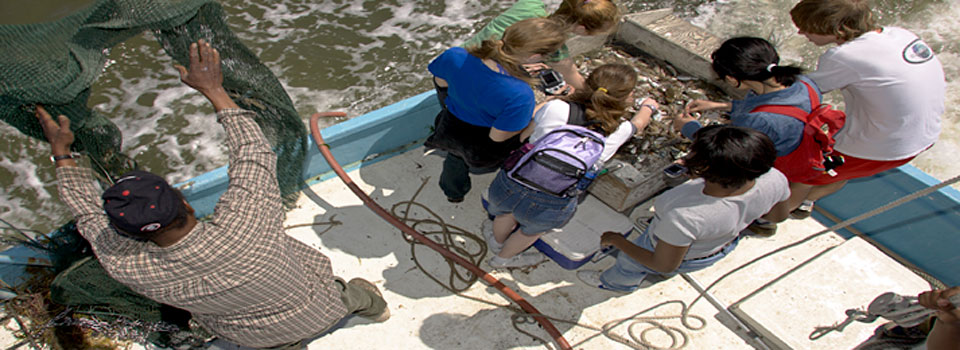Standing on the bank of a salt marsh on Georgia’s Sapelo Island, wearing shin-high rubber boots, Mary Ann Moran encouraged a group of high school students to join her.
“Just go ahead and get muddy,” said Moran, a UGA professor of marine sciences. “It’s fun.”
The goal was to collect brackish water for the students to analyze later, using state-of-the-art DNA techniques. Marine bacteria are still so poorly understood that there’s a good chance that many of the students would identify new species.
“About half will find bacteria that have never been found before,” Moran said.
For the past decade, Moran’s research has focused on a particular group of marine bacteria known as roseobacters for the pink color of some of the cells. Moran’s work, recently awarded a $2.6 million grant from the Gordon and Betty Moore Foundation, is illuminating how these marine bacteria move sulfur from the oceans to the atmosphere, where it plays a role in seeding clouds and regulating the Earth’s climate.
Moran has been working on Sapelo Island, home to UGA’s Marine Institute, for 20 years. Her trip to Sapelo earlier this year with 20 Cedar Shoals High School students helped show them a field that Moran said is important but often overlooked. Even those who go on to become chemists, musicians, accountants or doctors will have a sense of the vital role bacteria play in the health of the planet.
On Sapelo, the students collected water samples from the marsh and got to go out on the research boat Spartina. Then they headed home, taking with them samples that contained the bacteria. The high-school students would later analyze the bacteria using the same DNA techniques that Moran uses in her lab.
After giving the bacteria a few weeks to grow on petri dishes, Moran visited the students in their classroom at Cedar Shoals to teach them how to isolate the bacteria. A few weeks later, the students visited her lab to amplify-or copy many times-one gene in the bacterial DNA that serves as a “fingerprint” to help them discover its identity. Later, they obtained the exact order, or sequence, of the base pairs that make up this gene.
Moran’s work with young scientists, from high school students to post- graduate students, assures that future generations will keep asking important questions about the ocean’s unseen yet vital bacteria.
